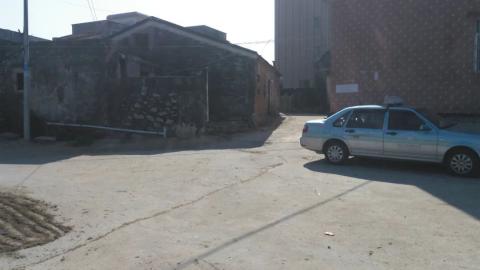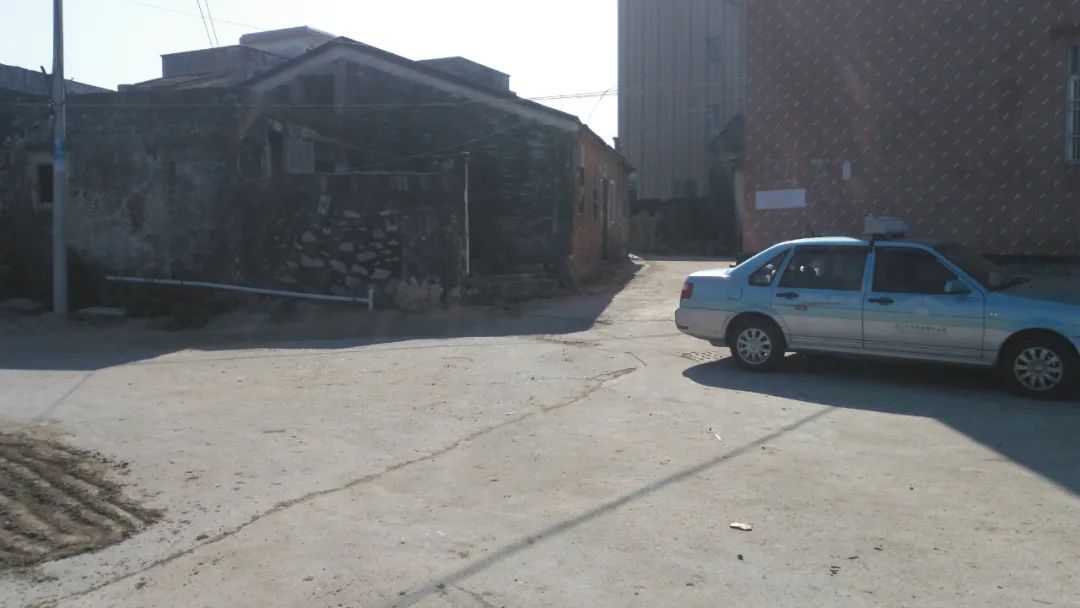
Time: December 31, 2016
Location: Xiyuan Village, Yashao Town, Yangdong District, Yangjiang City, Guangdong Province
Jingxiang Travel Notes Chapter 26丨Eighteen Yashao Seats
On the last day of 2016, the sun is still shining brightly here. The prestigious ancient villages - Yashao Eighteen are like a thousand-year-old Ganoderma lucidum hidden in the mountains. Although it has a tempting value because of its value full of the essence of the sun and the moon, you have to see its true appearance full of vicissitudes of life. But it's not easy.
Without any signage, after exploring the nine twists and turns, we stopped at this inconspicuous intersection.

No one can believe that this narrow alley is the only way to the destination. However, it is really like wild Ganoderma lucidum, and the road to find it must be uneven.
At noon, the village is relatively quiet. You can neither see farmers returning from hoeing in the fields nor hear the crowing of chickens and dogs. Only a few rows of ancient houses are quietly bathing in the winter sunshine.

The most famous thing here is the "Wu'er House" with ancient architectural style. In the imagination, Yashao 18 should be a village with rows of Wol'er Houses. In fact, the Wol'er Houses here are not so dense.
This is Yashao Xiyuan Village in Yangjiang City. Legend has it that during the Qianlong period of the Qing Dynasty, a cattle dealer named Tan Wei built eighteen wok-ear houses here, hence the name "Eighteen Yashao Houses".

Regardless of the credibility of the legend, this ancient blue brick house has actually experienced 250 years of ups and downs.
After more than 200 years of wind, rain, and long-term use, wooden doors are inevitably damaged, so this repair method emerged:

Broken doors can be repaired or replaced, but the carvings on the lintels remain original.

The houses with the couplets on them must be inhabited, but their doors are closed and there are no pedestrians in the lanes. Although the alley was quiet, it was very neat, as if it had been cleaned.

There were no moss marks on the wall, and it was so clean that I couldn't tell whether it was a popular place or a lonely place.
In another alley, the debris piled in front of the door showed that this was a permanent home.

In the open space next to the well, I finally saw a group of villagers verifying the number of acres of farmland subsidized for growing grain.

Why work outdoors? What about the office space in the village? Is it just for convenience?
These signs seem to tell me that the permanent population of this ancient village with historical value is decreasing, and the villagers are gradually moving out of this paradise that is difficult for outsiders to find. One day, uninhabited houses will collapse due to erosion by weeds, and ancient villages will disappear.
The winter dusk comes early, and the ancient village that was quiet during the day has a little life at this time. In the 257-year-old alleyway, on the uneven blue brick floor that has been trampled on, free-range chickens are preparing to return to their nests.

The returning buffaloes tread leisurely on the smooth floor tiles laid with support funds. This is undoubtedly the newly built main street.

The villagers who still live in the village are busy cooking at the moment, and the lanes still look cold. Only we tourists are still carefully observing every brick, every door here, and even the inconspicuous drainage ditch.

Is this door considered ancient? In ancient times, there were many old trees, and people used wood to make doors from one board (that is, without splicing, the board cut from the tree was enough for the width of a door). Only then did I discover that many doors in the village were made of one board. A board.
Several doors that had been closed during the day were now open. Enthusiastic villagers opened a wok-ear house that was not often lived in, allowing us to see the true face of Mount Lu inside.

The structure of the house follows the style of an ancient rural house: the main door is not as big as the hall door, and the two are in different directions (above: hall door, below: main door).

Entering the door is a small hall, and in front of the hall is a patio.

The patio is just like the alley outside, very clean but without any grass or moss. Although there are a few clothes hanging in the room, looking from the hall, it is obvious that this is not a place for daily life.

The living room, the center of the family's life, didn't even have a chair, and the screen was undecorated and was about to collapse.

There was an ancient large bed in the room, which had accumulated dust and the upper part of the bed frame was broken.

This is undoubtedly an antique.

Although this is still an ancient village with historical value, if it is not protected, I believe it will disappear soon.
Several of the eighteen wok-ear houses in the village no longer have wok ears. The reason is that they were unoccupied and lacked maintenance and became dangerous walls. Later, the wok ears were changed into triangles. There is even grass growing above the lintel of an uninhabited old house like this:

Some have even collapsed:

Protecting ancient villages focuses on protection rather than reconstruction. Only by maintaining their popularity can they be better maintained, and only by maintaining their original appearance can they have tourism and historical value. A main street with smooth floor tiles was paved today. Maybe some time the ancient lanes with blue brick floors will be paved with cement tiles. Friends who have never been there should go and have a look!
Preserve the ancient buildings, preserve the culture, and preserve the nostalgia.
Preview of the next article: The Chinese Valentine's Day is coming soon, so I will write about my experience of going to Taidong to wash in the water of July 7 - "Chinese Valentine's Day Mountain Stream Water".
